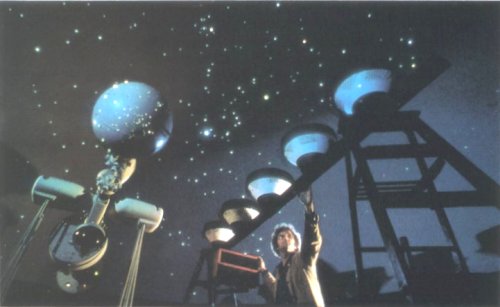
|
Bird Star Navigators Most birds migrate not by day, but at night. Employing conical cages, researchers quickly observed that night migrants exhibited hopping behavior similar to that of day migrants and that they oriented themselves in the proper direction under clear, starry skies but became disoriented when it was cloudy. The decisive tests were performed in a planetarium, where star patterns can be manipulated at will. The experiments indicated that night-migrating birds learn and orient by spatial relationships among the constellations, rather than using information supplied by any single star. More recently, scientists have discovered that birds begin to develop star compass capability when they are quite young, and as experienced adults they can use many parts of the sky to decipher compass directions. Return to Bird Migration and Navigation |
| In conical Cages Indigo Buntings successfully orient under a planetarium sky. By using a planetarium, scientists can alter aspects of the sky to determine their importance as migratory cues. |